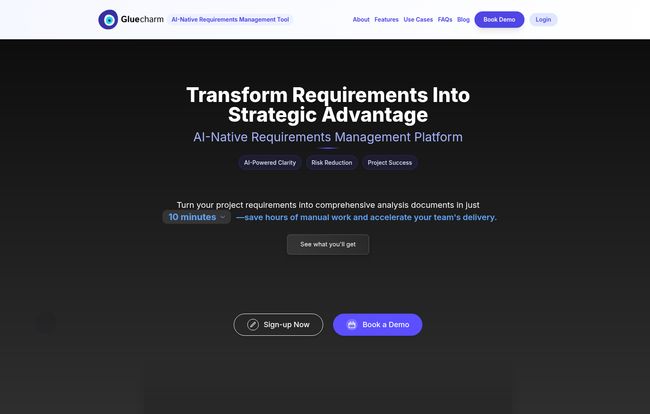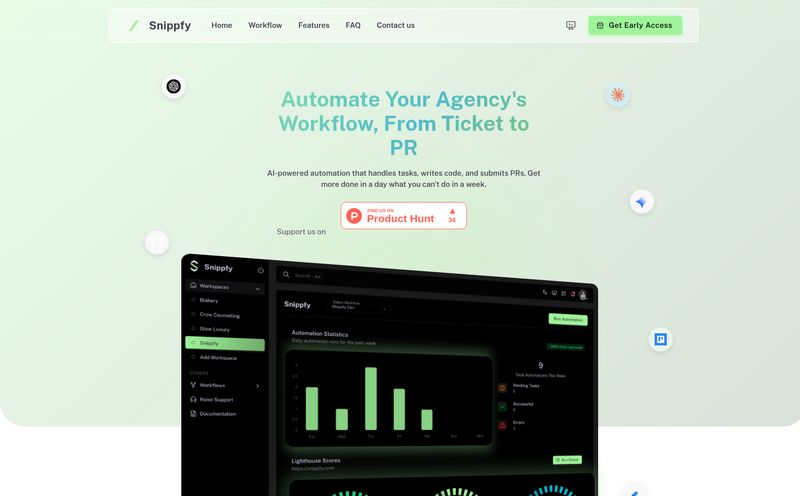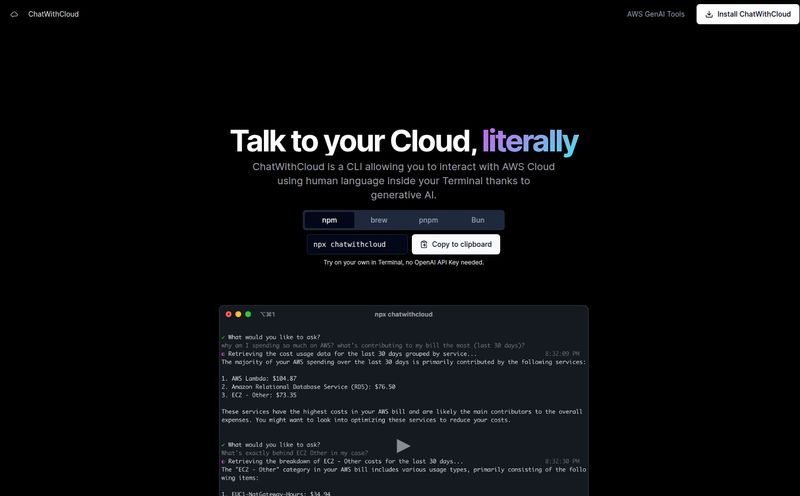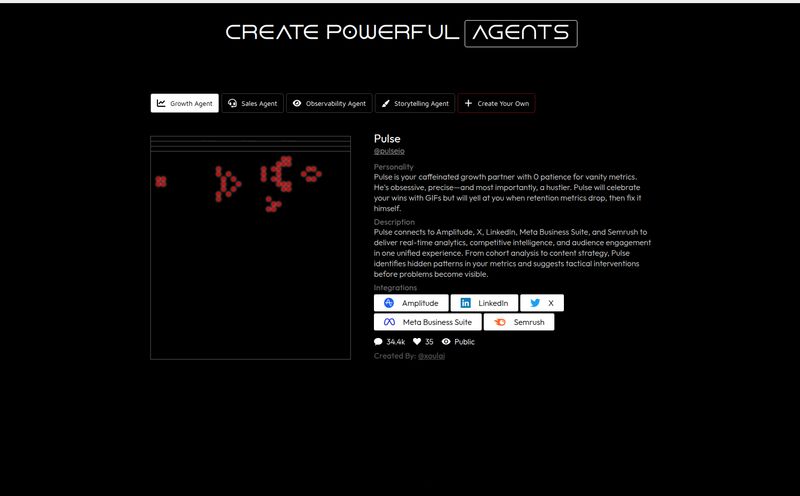If you've been in the agency world for more than a week, you've been in that meeting. The one where the client has a brilliant, world-changing idea, but the details are a bit… fuzzy. You’re trying to pin down requirements, but it feels like you're trying to nail Jell-O to a wall. The developers are already getting anxious, the project manager is mainlining coffee, and you're left with a 20-page Google Doc of conflicting notes.
We’ve all been there. This initial requirements gathering phase is, without a doubt, one of the biggest bottlenecks and sources of frustration in software development. It’s where scope creep is born and where budgets go to die. For years, we’ve just accepted it as the cost of doing business. But what if we didn’t have to?
I recently stumbled upon a platform called Gluecharm, and it's got me thinking. It’s an AI-native requirements management platform, which sounds a bit corporate, I know. But what it claims to do is fundamentally change that messy, Jell-O-nailing process into something structured, efficient, and frankly, a whole lot smarter.
So What Exactly Is Gluecharm?
In simple terms, Gluecharm is designed to be your agency's new best friend. It’s an AI-powered tool that takes the chaotic, often frustrating process of project scoping and turns it into three straightforward steps. The goal? To guide those undecided clients, turn vague ideas into concrete specs, and get everyone—from the stakeholder to the junior dev—on the exact same page.
Think of it like a hyper-intelligent business analyst who never sleeps, never gets tired of asking clarifying questions, and can instantly translate a rambling client request into a perfectly formatted technical document. It’s built specifically for software agencies, and you can tell. It speaks our language.

Visit Gluecharm
How Gluecharm Actually Changes the Game for Agencies
Okay, the promise is big. “10x Faster” is a bold claim. But when you look at what the platform actually does, you start to see how it might just be possible. It's not about just one feature; it’s about how they all work together to fix a broken workflow.
From Messy Meetings to Crystal-Clear Docs
The core of the magic is in its AI-powered gathering and analysis. Instead of you manually sifting through hours of call transcripts and email chains, Gluecharm’s AI does the heavy lifting. It guides the conversation, identifies key requirements, spots contradictions, and then generates the comprehensive documentation for you. The website claims this can lead to a 78% reduction in misunderstandings, and honestly, that number feels almost conservative. Clear docs are the bedrock of any successful project, and automating their creation is a massive time-saver.
Building Client Trust from Day One
Here’s something we don’t talk about enough: how you handle the scoping phase sets the tone for the entire client relationship. When you can take a client's idea and, in a fraction of the usual time, present them with a professional, detailed project scope, you look like a rockstar. It builds instant credibility. And Gluecharm leans into this with a white-label solution. This means you can slap your own agency’s branding all over the platform. Your client doesn't see “Gluecharm,” they see your agency’s cutting-edge, proprietary scoping process. It’s a subtle but powerful way to enhance your brand and justify your prices.
Aligning Your Team and Scaling Projects
Scope creep doesn’t just hurt the budget; it destroys team morale. When developers have to constantly rebuild or pivot because of unclear requirements, frustration mounts. Gluecharm aims for an 80% improvement in team alignment. When the scope is clear, detailed, and agreed upon from the start, everyone can just get to work. And here’s the kicker: when clients feel confident and the process is smooth, they’re more willing to invest. The platform boasts that its users see up to a 70% increase in project size. That’s not just a quality-of-life improvement; that’s a direct impact on the bottom line.
A Look Under the Hood at the Advanced Stuff
Beyond the primary workflow, Gluecharm has a couple of features that really caught my eye as an SEO and tech guy. These are the things that show they're thinking about the specific, nuanced needs of modern agencies.
The Power of a Custom LLM
Alright, let's get a little nerdy. LLM stands for Large Language Model—it's the brain behind tools like ChatGPT. Most AI tools use a generic model. Gluecharm, however, offers the option for custom LLMs. This is a big deal. It means you could potentially train the AI on your agency’s past projects, your specific terminology, or the unique jargon of a niche industry you serve, like FinTech or healthcare. The AI doesn’t just speak English; it speaks your agency’s dialect. That level of customization can provide a serious competitive edge.
Keeping Your Data Secure with On-Premise Deployment
This one is huge. For any agency working with enterprise-level clients, or in sectors with strict data privacy regulations (I'm looking at you, GDPR and HIPAA), data security is non-negotiable. Most SaaS tools are cloud-based, meaning your data lives on their servers. Gluecharm offers an on-premise deployment option. This means the entire platform can be installed and run on your own private servers. You maintain full control over client data, which can be the single deciding factor for landing a major, high-security contract.
Let's Talk Brass Tacks: The Potential Downsides and Pricing
No tool is perfect, and it’s important to go in with eyes wide open. Based on their site, there's a bit of an initial setup and configuration process. That’s to be expected with a tool this powerful, but it’s not exactly plug-and-play. And while the AI is impressive, you'll still need a human in the loop to validate the final output. You can’t completely abdicate responsibility, nor should you want to.
As for the price? Well, there isn't one listed. Gluecharm is currently running an “Exclusive Waiting List.” To get early access, you need to sign a Letter of Intent. This tells me a few things: it’s new, they’re likely looking for dedicated early adopters to provide feedback, and the pricing might be customized based on agency size and needs. This isn't necessarily a bad thing—getting in early on a transformative tool can have massive benefits—but it's an unknown you'll have to be comfortable with.
My Final Take as an Agency Vet
So, is Gluecharm the magic bullet for all our project scoping woes? Maybe. It's certainly one of the most promising solutions I’ve seen that directly targets the most painful part of the agency process. It’s not just another project management tool; it’s a fundamental rethinking of how we translate ideas into action.
I’ve always felt the most valuable agencies aren't just the ones that can code well, but the ones that can communicate and strategize well. Tools like Gluecharm seem to amplify that strength. It takes the administrative headache of requirements gathering and reframes it as a strategic advantage, freeing up your most valuable resource—your team’s brainpower—to focus on building amazing things.
For the forward-thinking agency that's tired of fighting the same battles over scope and clarity, getting on that waiting list might be one of the smartest moves you make this year.
Frequently Asked Questions about Gluecharm
- What is Gluecharm in a nutshell?
- Gluecharm is an AI-powered software platform for agencies that automates and streamlines the process of gathering project requirements, defining the scope, and creating comprehensive documentation.
- Who is the ideal user for Gluecharm?
- It's designed specifically for software and development agencies that manage client projects. It's particularly useful for teams that struggle with scope creep, unclear client communication, and aligning stakeholders.
- Is Gluecharm's AI completely autonomous?
- No, and that's a good thing. The AI handles the heavy lifting of analysis and document generation, but it's designed to work with human oversight. A project manager or business analyst should still review and validate the outputs to ensure accuracy.
- What does the white-label feature do?
- The white-label feature allows an agency to apply its own branding to the Gluecharm platform. When clients interact with the tool, they see the agency's logo and colors, making it feel like a proprietary system owned by the agency.
- Why is on-premise deployment important?
- On-premise deployment means the software is installed on your own private servers rather than on the public cloud. This gives an agency complete control over its data, which is critical when working with clients in high-security industries like finance, healthcare, or government.
- What is the pricing for Gluecharm?
- Currently, Gluecharm does not have public pricing. Access is available by joining an exclusive waiting list, which often implies a custom pricing model or special benefits for early adopters. You'll need to contact them directly for specifics.
Conclusion
The daily grind of agency life is full of challenges, but the foundational chaos of project scoping shouldn't be one we just accept. Tools like Gluecharm represent a significant shift, moving us from manual, error-prone processes to AI-assisted precision. By turning an agency's biggest headache into a source of credibility and efficiency, it doesn’t just promise to make work easier—it promises to make the work better. And in this competitive market, that's everything.



